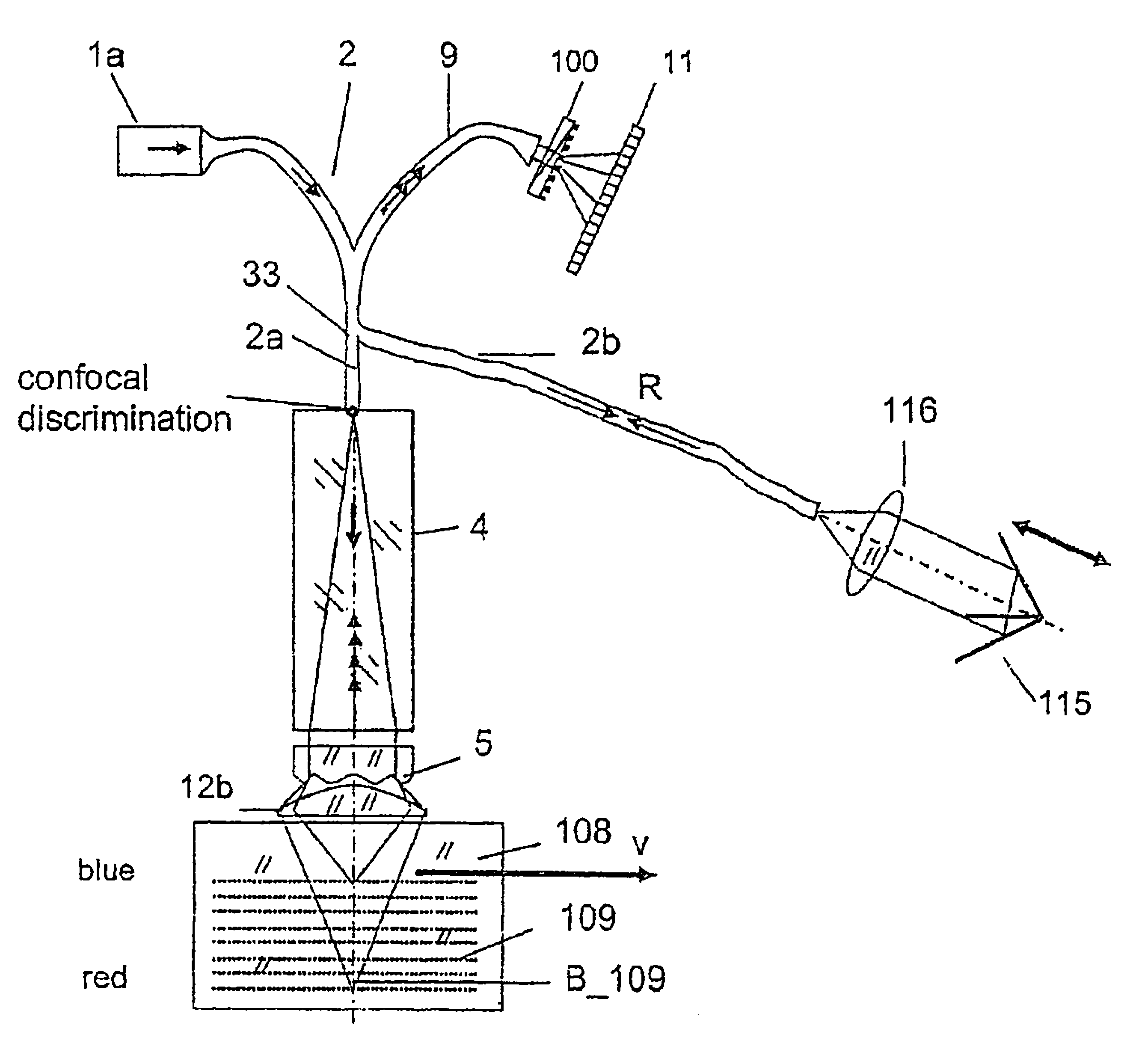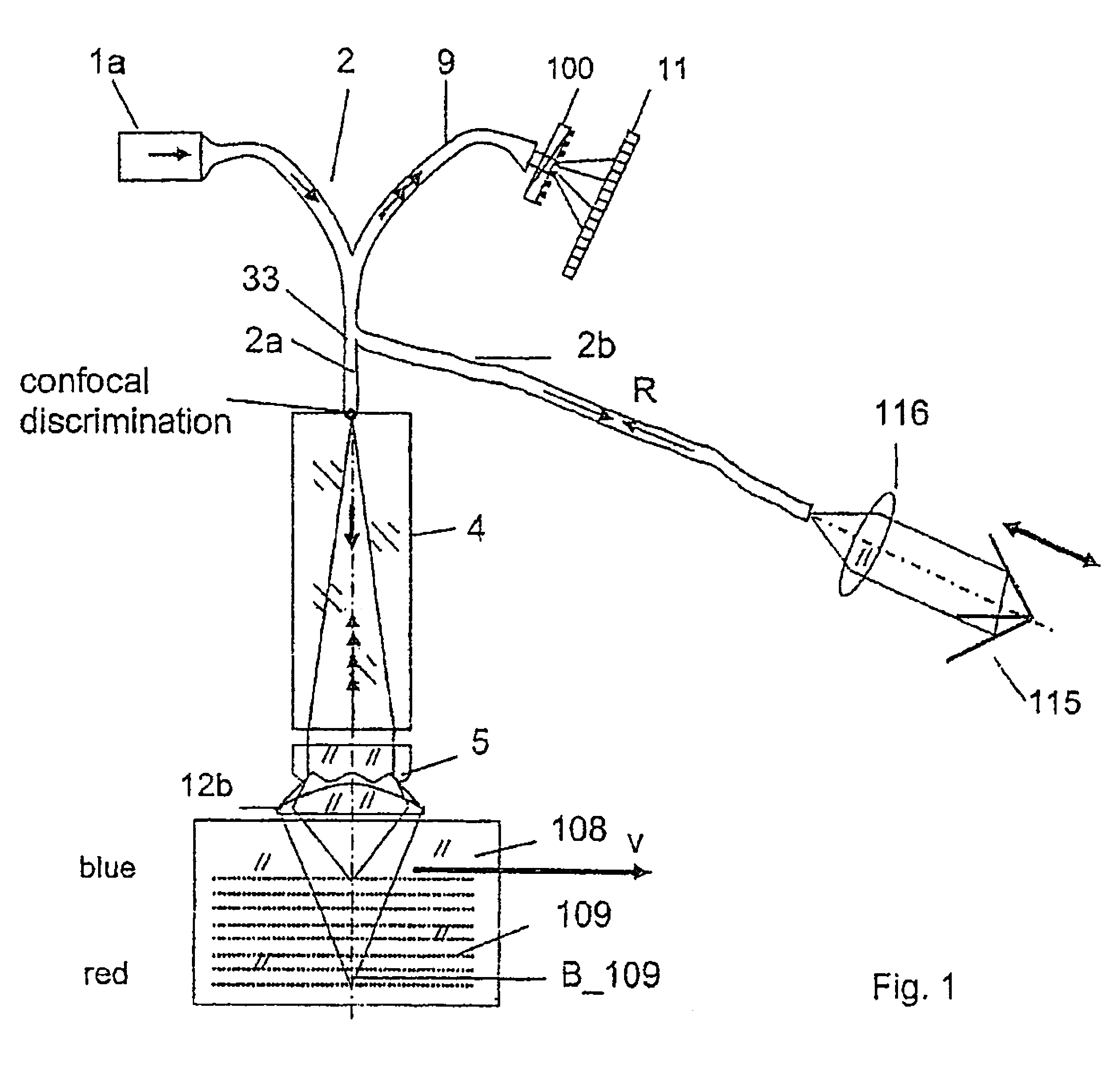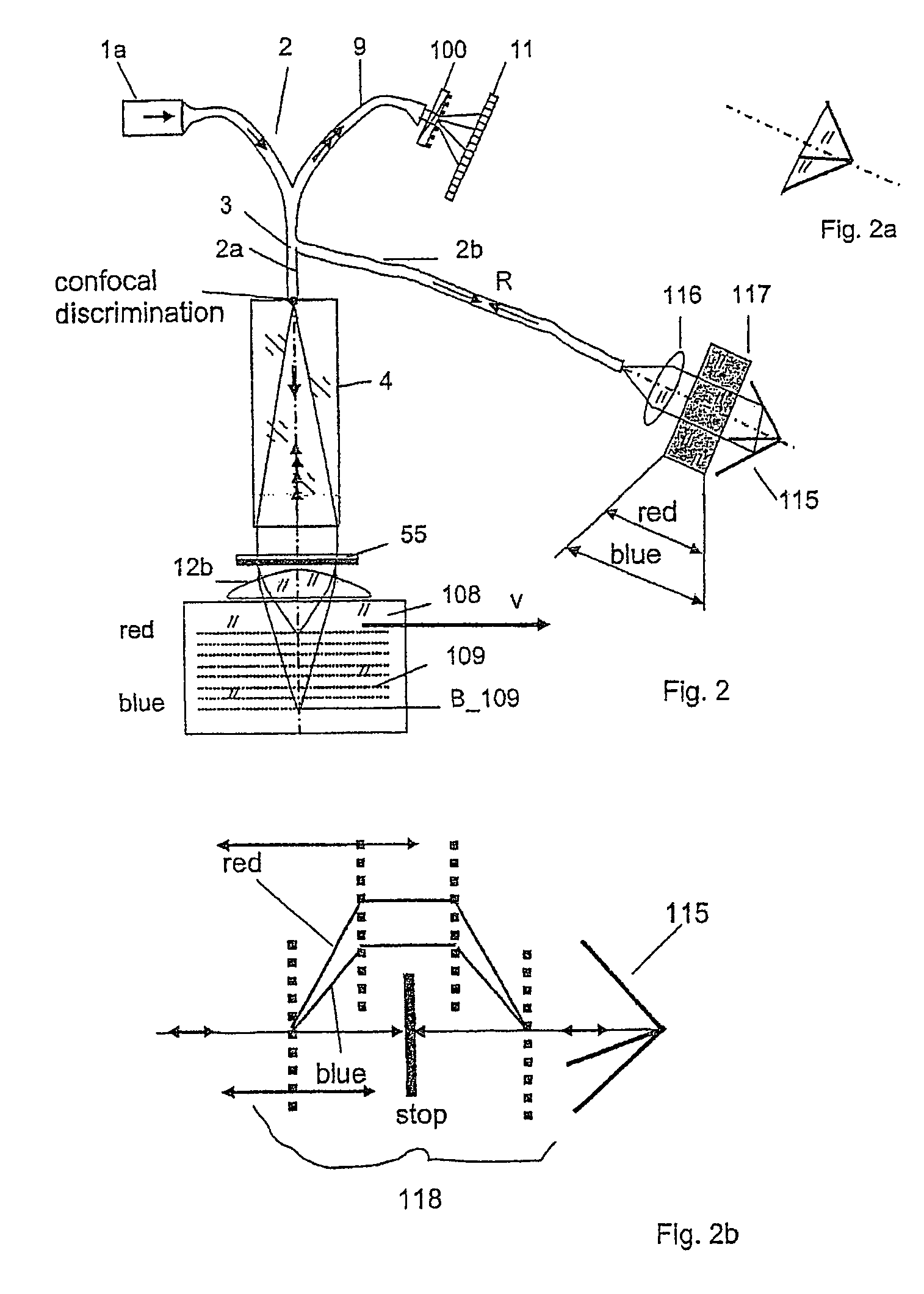Method and assembly for confocal, chromatic, interferometric and spectroscopic scanning of optical, multi-layer data memories
a multi-layer data memory and optical technology, applied in the field of interferometric confocal methods, an interferometric confocal assembly for optical data storage devices, can solve the problems of excessively low data readout speed even in modern real-time applications, and the storage volume of 17 gbyte dvds is nowhere near adequate,
- Summary
- Abstract
- Description
- Claims
- Application Information
AI Technical Summary
Benefits of technology
Problems solved by technology
Method used
Image
Examples
Embodiment Construction
[0108]The invention is described by way of example with reference to FIGS. 1 to 4.
[0109]The representation of dots and / or pits and also reflection layers through refractive index differences which serve solely for the spatial structuring of the storage volume for one or more reference systems is dispensed with here.
[0110]Regarding FIG. 1: the light proceeding from a comparatively strong continuum white light laser 1a passes via an optical fiber 2 and an x-coupler 33, as partial light via a fiber piece 2a and via a GRIN lens for collimating the light bundle onto a diffractive optical zone lens 5 having a negative refractive power—variable as a function of the light wavelength—in the first diffraction order, such that this acts as a diverging lens. The chromatically split light passes onto a micro-objective 12b exhibiting good chromatic correction.
[0111]By virtue of the wavelength-dependent refractive power of the diffractive light-diverging zone lens 5, this leads to a longitudinal c...
PUM
| Property | Measurement | Unit |
|---|---|---|
| depth | aaaaa | aaaaa |
| depth | aaaaa | aaaaa |
| full width at half maximum | aaaaa | aaaaa |
Abstract
Description
Claims
Application Information
 Login to View More
Login to View More - R&D
- Intellectual Property
- Life Sciences
- Materials
- Tech Scout
- Unparalleled Data Quality
- Higher Quality Content
- 60% Fewer Hallucinations
Browse by: Latest US Patents, China's latest patents, Technical Efficacy Thesaurus, Application Domain, Technology Topic, Popular Technical Reports.
© 2025 PatSnap. All rights reserved.Legal|Privacy policy|Modern Slavery Act Transparency Statement|Sitemap|About US| Contact US: help@patsnap.com



